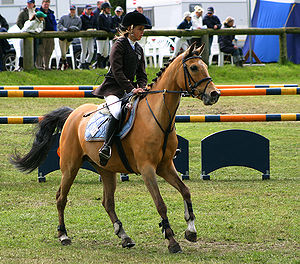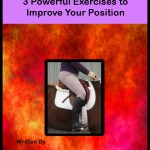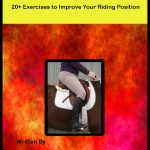Anatomy of a Hunter Round Part 2 – The Approach

Think of the hunter round of being composed of five parts:
- the start
- the approach
- the course
- the finish
- the exit
The start was dealt with in part 1 and we are now moving into part 2 the approach to the first fence.
Once you have completed your introductory circle (if it is required – sometimes classes are positioned so no intro circle is necessary) you approach the first fence. This is where the judge:
- in a hunter round – assesses your horse’s movement, general impressions on the horse will perform. This is where you will see green horses with ears straight up, with inquisitive looks and those nappy campaigners may dig in their toes.
- in an equitation round – assesses your general impressions. This is where ill prepared novice riders stop breathing and crouch into fetal position. While a prepared rider knows what is required and prepares the horse for the first fence.
This is the first point where the judge will really see what the horse (and rider in an equitation round) will do when presented with a jump.
“Nailing” the first fence on course it the end of a great approach and the beginning of a great course. If, however, the first fence is botched it leaves a bad impression with the judge and leaves you with the task of fighting your way back into the ribbons with a stellar performance.
Getting to the first fence in rhythm, straight and at the right distance is what the judge is looking for. Here is a quick schooling video showing two horses approaching a (very) small fence and how they can correct their minor drifts to the fence.
Simple exercises such as these can help you improve your approach to your rounds and win more ribbons in hunter and equitation classes.
By botched I mean a missed distance, chipped in, too close, or even leaving too far from the base of the fence. Or even worse – a refusal. If you nail the first fence you will be on your winning way.





 Try these three powerful exercises to get strengthen your position.
Try these three powerful exercises to get strengthen your position.
